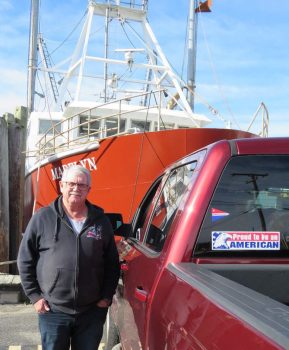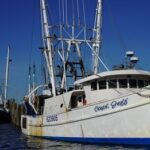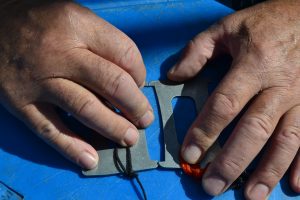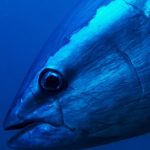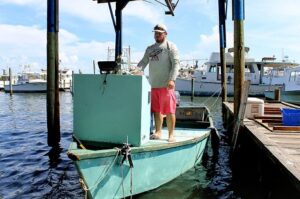Tag Archives: Scallop
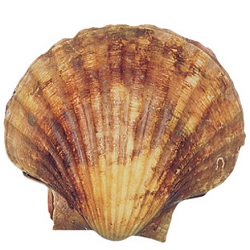
New Scallop Beds Discovered! Scallop Boom On Way For Victoria.
The Andrews Labor Government is delivering a boost to Gippsland’s scallop industry, lifting the allowable commercial catch for the ocean scallop fishery by more than seven times after new scallop beds were discovered off the east coast. A survey conducted near the Tarwhine oil and gas fields off Gippsland confirmed a return of harvestable scallop beds in the area, and subsequent consultation with industry bodies and licence holders has resulted in a substantial increase to the total allowable commercial catch (TACC), from 135 to 979 tonnes. >click to read< 13:55

Nova Scotia Supreme Court approves sale of Clearwater Seafoods
It is the final step in a deal described as “the single largest investment in the seafood industry by any Indigenous group in Canada.” On Thursday, shareholders voted in favour of the sale to a partnership of Premium Brands of British Columbia and a coalition of Mi’kmaw First Nations led by the Membertou band of Nova Scotia and the Miawpukek in Newfoundland and Labrador. Court approval for the mega deal took 20 minutes. >click to read< 18:40

‘We won’: Clearwater Seafoods deal gives Mi’kmaq control of lucrative ocean stretch
Early this week, leaders of the Membertou and Miawpukek First Nations, both of which are Mi’kmaq communities, reached an agreement to buy Nova Scotia-based Clearwater Seafoods in a deal worth C$1bn (£580m). Heralded as the “single largest investment in the seafood industry by any Indigenous group in Canada”, the landmark deal comes at a critical moment for Indigenous communities in the region, as tensions remain high over their treatied fishing rights. >click to read< 15:48

Marine Biologist Doubts Parasite Was Only Cause of Bay Scallop Collapse
A parasite that the New York State commissioner of environmental conservation called “a significant threat” to the Peconic Bay scallop fishery has been detected in a sample of bay scallops from Shelter Island — and may have been a factor in the near total collapse of the adult scallop population throughout the estuary last year. A type of single-cell protozoan from a group known as coccidia, the parasite found,, >click to read< 17:17
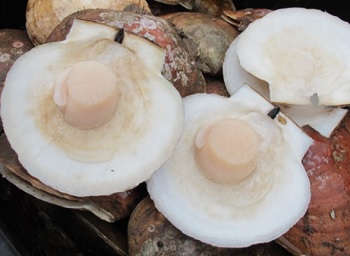
Value of Maine scallop landings dropped by 37 percent last year
Maine’s 2018 scallop harvest fell by 37 percent in value and by 30 percent in volume from the prior year, according to state officials. Despite the dropoff, the fishery continues to be relatively productive and lucrative compared to its poor condition in the 2000s. Maine scallop fishermen netted 563,000 pounds of scallop meat with a cumulative dockside value of $5.9 million in 2018, continuing a streak of six straight years in which the fishery has produced nearly half a million pounds or more of scallop meat and at least $5 million in statewide landings value. >click to read<09:56

Another Government Shutdown Could Sink Scallop Fishery Profits
The world is smitten with scallops. Their subtle sweetness and firm but somehow delicate bite has many wanting more. When I previously worked in seafood sales, I couldn’t believe how much chefs in Los Angeles would pay to put the great New Bedford sea scallop on their menus. We’re talking over $35 per pound for the big ones. I’d think to myself, “These chefs know there are scallops in the Pacific, right?” >click to read<15:39
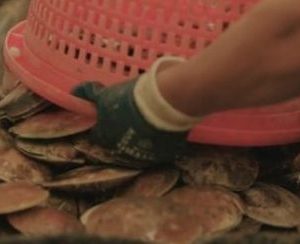
Maine’s rebuilt scallop fishery looks to year of more growth
Maine is known for producing scallops that are somewhat bigger than other East Coast states, and some are plucked from the icy waters by hand during winter. Others are harvested by boats with fishing gear. The Maine Department of Marine Resources has said strict management of the harvest has allowed the scallops to rebuild from collapse in the mid-2000s. The state is looking to continue that trend this year with a season that keeps fishermen restricted to tight limits on the number of pounds they can harvest. Fishermen are also limited in the number of days they can fish, and the state is looking to trim a few days. >click to read<10:19
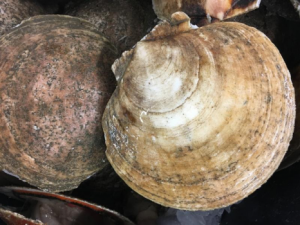
Setbacks for Ramea’s scallop fishery
Labrador Gem Seafoods owner Danny Dumaresque is anxious about having a decent season at Ramea’s scallop plant this year. A few glitches with a new on board tank holding system and issues getting independent fish harvesters to provide the raw resource resulted in plant employees working less weeks than they are accustomed to. Approximately three weeks ago, a new refrigerated, recirculating sea water system that enables a vessel to carry live sea scallops in temperature controlled water was slightly too high, effectively parboiling the scallops that must arrive to the plant alive in order to be properly processed into the line of products the company produces. The equivalent of a metric ton of finished product had to be discarded. >click to read<13:25
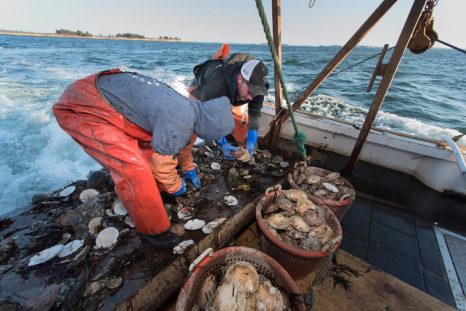
Forget Lobster: The Scallop Is the Real Seafood King
When I tell people that I’m a part-time resident of Maine, I often get an enthusiastic, “Wow, you must get sick of lobster.” And, yes, it’s true. I do get sick of lobster. But not from eating too much. I get sick of lobster cultists, that roving band of hard-shelled Hare Krishnas who loudly express devotion to the crustacean as they wander the Maine coast in search of shrines they call “pounds.”,,, The central tragedy of their endless rovings is the long and pernicious shadow they cast over the region’s true and absolute delicacy. I am talking, of course, about big, flavorful sea scallops, which are the north’s bona fide maritime royalty.,,, Fundy scallops are massive; some are the size of filet mignons. Often, two or three scallops per person are enough for dinner. >click to read<12:56

Maine DMR sets up lottery for new scallop licenses
This week, the Maine Department of Marine Resources (DMR) announced the final terms for two newly established lotteries for scallop fishing licenses. One lottery is for dragger licenses, the other for diver licenses. The catch, though, is that nobody knows for sure how many licenses, if any, will be available each year. DMR has been working for more than a year on a plan to bring new entrants into the scallop fishery. The lotteries announced this week are the culmination of extensive discussions last year among members of DMR’s Scallop Advisory Council with considerable input, often heated, from industry members. >click to read<09:09
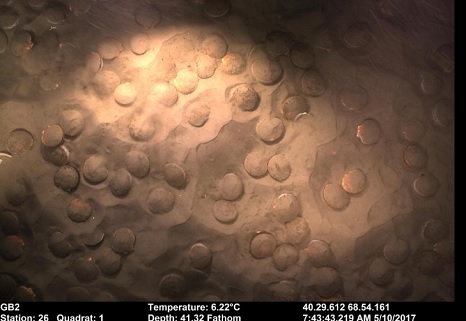
Don Cuddy: Mattapoisett company moving fishing tech forward
Sometimes a chat over a fence is all it takes to set great things in motion. Fairhaven resident Karl Edminster was talking with his neighbor, marine researcher Emily Keiley, when she mentioned that SMAST had an underwater cable that had suffered damage on a fisheries survey cruise. She knew Karl’s job had something to do with electrical work. He said he’d take a look. In fact, Karl is the president of Elecrtromechanica, a high tech design and build engineering outfit based in Mattapoisett. They spliced the cable. “But we told them we do more than fix cables,” >click to read<15:04
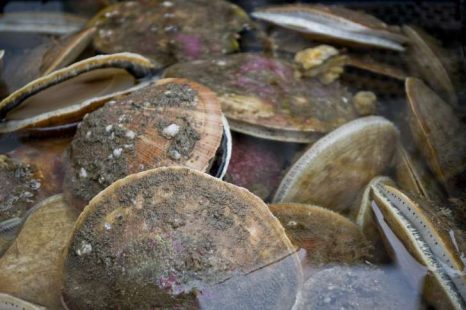
Maine shutting down more scallop areas to protect harvest
Maine officials say the state’s shutting down a few high traffic scallop fishing areas to prevent overfishing. The Maine Department of Marine Resource is closing Sand and Machias bays and Lower Englishman Bay starting on Sunday. It’s also shutting down parts of Cobscook Bay, which is the most fertile scallop fishing ground in Maine. >click to read< 19:13
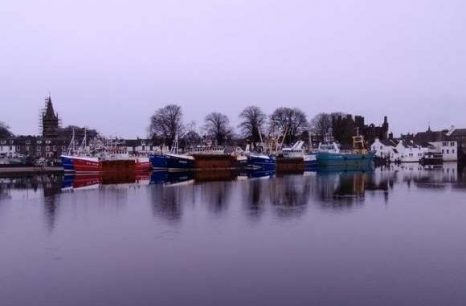
Kirkcudbright scallop fishermen set to be hit by Isle of Man law changes
Fishermen at Kirkcudbright are likely to be hit by law changes on the Isle of Man. The Manx Department of the Environment, Food and Agriculture have ruled that all boats fishing for scallops in their waters must report to their ports every day. The requirement – due to come into effect on January 8 – could have a devastating effect particularly at Kirkcudbright, which is the country’s top scallop-landing port. click here to read the story 12:47 
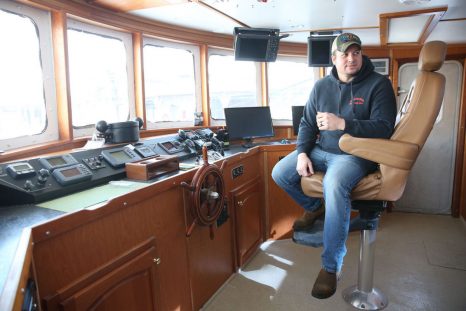
Southern Cape May County’s commercial fishing industry is worth $85 million
Southern Cape May County’s commercial fishing industry is worth $85 million, according to a recently released federal report. The combined port of Cape May and Wildwood is the ninth largest commercial fishing port in the United States and the second biggest on the East Coast, measured by dollar value. In a county known as a tourism hub, commercial fishing — and especially the scallop trade — is a big part of the area’s economy, those in the industry say.,,Fishermen need to buy fuel and groceries for every trip and hire welders and electricians to repair their boats, which creates additional jobs, Laudeman said. click here to read the story 10:22
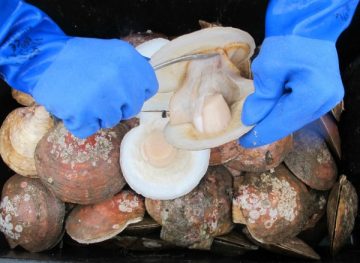
Maine: Scallop license lottery moves forward
More scalloping or more scallopers? That’s the question the Department of Marine Resources is facing with a proposed rule that would establish a lottery system for new scallop fishing licenses. Under a plan announced last week, DMR would issue annually two new scallop dragging licenses for every three surrendered. The department would also issue one new diving license for each one not renewed. click here to read the story 16:31

Peconic Bay scallopers asked to slow down due to plentiful harvest
This year’s Peconic Bay scallop harvest is starting off with one of the strongest yields in years, according to local seafood markets and baymen. “It’s definitely a pretty impressive year,” said Charlie Manwaring, owner of Southold Fish Market. During the first week, in fact, so many baymen brought in their 10-bushel limit that he and other market operators asked them to hold off bringing in more so that they could catch up with the oversupply, which strained their ability to shuck and sell the mounds of shellfish. click here to read the story 15:24
Marine biologists, baymen bringing back Peconic Bay scallops – There is a story in every shell. click here to read the story
Planned license lottery draws fire at scallop hearing
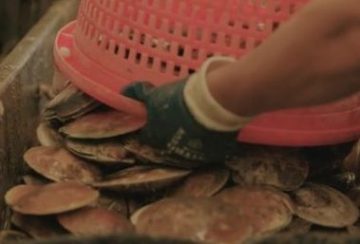 One look at the audience at a Department of Marine Resources hearing on new scallop fishing rules last week made it clear that the fishery is getting older. By a good margin, most of the three dozen or so scallop harvesters at Ellsworth City Hall last Wednesday evening had faces lined by years on the water and beards long gone gray.,, In 2009, the Legislature passed a moratorium on new scallop licenses. It also ordered DMR to come up with a lottery system to allow new entrants into a fishery that Brooklin scallop dragger David Tarr describes as a “club. click here to read the story 12:12
One look at the audience at a Department of Marine Resources hearing on new scallop fishing rules last week made it clear that the fishery is getting older. By a good margin, most of the three dozen or so scallop harvesters at Ellsworth City Hall last Wednesday evening had faces lined by years on the water and beards long gone gray.,, In 2009, the Legislature passed a moratorium on new scallop licenses. It also ordered DMR to come up with a lottery system to allow new entrants into a fishery that Brooklin scallop dragger David Tarr describes as a “club. click here to read the story 12:12
Small-boat scallop fishermen worry about being overwhelmed by larger boats in the Gulf of Maine
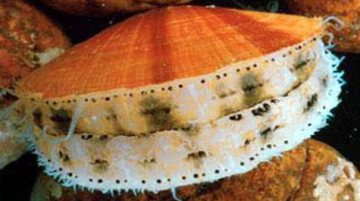 Since the start of the scallop season this month, Jim Wotton has dragged heavy dredges along the seabed off Gloucester, hauling in as much as 200 pounds a day of the valuable clams, the area’s federal limit for small-boat fishermen. Now, to his dismay, dozens of larger, industrial-sized boats have been steaming into the same gray waters, scooping up as many scallops as they can. Unlike their smaller counterparts, the large vessels have no quota on the amount they can catch; they’re only limited by the number of days they can fish.,, NOAA officials acknowledge the fishermen’s concerns, but have declined to take emergency action to close the fishery.,, Representatives of the larger boats say they have every right to fish in the area, and insist their catch won’t threaten the fishery.,, “The situation this year can’t continue and support a strong fishery year in and year out in the Gulf of Maine,” said Pete Christopher, a supervisory fishery policy analyst at NOAA Fisheries. “The council needs to change the way the fishery operates.” read the story here 18:52
Since the start of the scallop season this month, Jim Wotton has dragged heavy dredges along the seabed off Gloucester, hauling in as much as 200 pounds a day of the valuable clams, the area’s federal limit for small-boat fishermen. Now, to his dismay, dozens of larger, industrial-sized boats have been steaming into the same gray waters, scooping up as many scallops as they can. Unlike their smaller counterparts, the large vessels have no quota on the amount they can catch; they’re only limited by the number of days they can fish.,, NOAA officials acknowledge the fishermen’s concerns, but have declined to take emergency action to close the fishery.,, Representatives of the larger boats say they have every right to fish in the area, and insist their catch won’t threaten the fishery.,, “The situation this year can’t continue and support a strong fishery year in and year out in the Gulf of Maine,” said Pete Christopher, a supervisory fishery policy analyst at NOAA Fisheries. “The council needs to change the way the fishery operates.” read the story here 18:52
German company eyes wind farm project off Fire Island
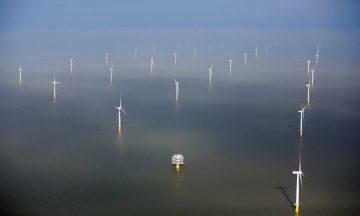 “The idea that you can just show up and stick a flag in the ocean floor and say it’s mine without regard to the fishing community it will displace is unconscionable and un-American,” said Bonnie Brady, executive director of the Long Island Commercial Fishing Association.A German renewable-energy company has submitted an unsolicited bid for more than 40,000 acres of water rights due south of Fire Island for the first phase of a wind-turbine array of up to 400 megawatts. Maps submitted with the project indicate it would place 30 to 50 turbines around 600 feet tall in an area that extends from Bayport to Moriches, starting around 12 miles from shore. The project would be east of another wind-energy area that was federally auctioned in December to Norway-based Statoil for $42 million. Both projects, which would require numerous state and federal permits, are in areas considered vital to fishing interests; the Statoil project is already the subject of a federal lawsuit seeking to block it and preserve squid, scallop and bottom-fishing grounds. Called the NY4 Excelsior Wind Park, the latest project is being proposed by PNE Wind, a German developer of onshore and offshore wind projects with a U.S. base in Chicago. (we are opposed) Read the story here 07:54
“The idea that you can just show up and stick a flag in the ocean floor and say it’s mine without regard to the fishing community it will displace is unconscionable and un-American,” said Bonnie Brady, executive director of the Long Island Commercial Fishing Association.A German renewable-energy company has submitted an unsolicited bid for more than 40,000 acres of water rights due south of Fire Island for the first phase of a wind-turbine array of up to 400 megawatts. Maps submitted with the project indicate it would place 30 to 50 turbines around 600 feet tall in an area that extends from Bayport to Moriches, starting around 12 miles from shore. The project would be east of another wind-energy area that was federally auctioned in December to Norway-based Statoil for $42 million. Both projects, which would require numerous state and federal permits, are in areas considered vital to fishing interests; the Statoil project is already the subject of a federal lawsuit seeking to block it and preserve squid, scallop and bottom-fishing grounds. Called the NY4 Excelsior Wind Park, the latest project is being proposed by PNE Wind, a German developer of onshore and offshore wind projects with a U.S. base in Chicago. (we are opposed) Read the story here 07:54
Out-of-state scallop boats threaten survival of Maine fishermen
 After years of waiting for the northern Gulf of Maine scallop population to flourish, small-boat fishermen from Maine say federal mismanagement of scallop stocks in the area could result in larger boats wiping them out. Hancock fisherman James West said that larger boats, most of which are based out of state, should not be allowed unlimited catches when he is capped at harvesting only 200 pounds of meat a day. And he said he’s angry that the New England Fishery Management Council has known about the regulatory disparity for years and has done nothing to address it. “That’s what makes me so mad about it,” West said Sunday. “I’m shocked the council couldn’t figure out a way to fix this. We’re really getting the shaft.” Council officials say protecting the lucrative resource is a high priority that they plan to address in the coming year. But Maine fishermen say a year could be too late to ensure that federal scallop grounds in the gulf stay productive. continue reading the story here 07:36
After years of waiting for the northern Gulf of Maine scallop population to flourish, small-boat fishermen from Maine say federal mismanagement of scallop stocks in the area could result in larger boats wiping them out. Hancock fisherman James West said that larger boats, most of which are based out of state, should not be allowed unlimited catches when he is capped at harvesting only 200 pounds of meat a day. And he said he’s angry that the New England Fishery Management Council has known about the regulatory disparity for years and has done nothing to address it. “That’s what makes me so mad about it,” West said Sunday. “I’m shocked the council couldn’t figure out a way to fix this. We’re really getting the shaft.” Council officials say protecting the lucrative resource is a high priority that they plan to address in the coming year. But Maine fishermen say a year could be too late to ensure that federal scallop grounds in the gulf stay productive. continue reading the story here 07:36
A day in the life of a New Bedford scallop boat captain
 “We’re really pleased to see such a great turnout,” Fishing Heritage Center Director Laura Orleans told the standing-room-only crowd filling the center on Jan. 11. Pleased, but not surprised at the big turnout. “It’s no surprise because Chris Wright is one of my favorite captains,” Orleans said. By the end of the interesting lecture on his life at sea, and a spirited question-and-answer session, Wright was the favorite scallop boat captain of everyone in the room. “Don’t be in awe of us” braving fierce winds and mountainous waves far offshore, Wright suggested modestly at one point in the question-and-answer period. “It’s just what we do.” What Wright does is skipper the Huntress out of Fairhaven, and the Nordic Pride, based in New Bedford. A shared captain is not uncommon these days, with each scallop boat limited by fishing regulations to a maximum of 75 days at sea, he noted. “I’m getting ready for my 29th year as a captain,” Read the story here 16:32
“We’re really pleased to see such a great turnout,” Fishing Heritage Center Director Laura Orleans told the standing-room-only crowd filling the center on Jan. 11. Pleased, but not surprised at the big turnout. “It’s no surprise because Chris Wright is one of my favorite captains,” Orleans said. By the end of the interesting lecture on his life at sea, and a spirited question-and-answer session, Wright was the favorite scallop boat captain of everyone in the room. “Don’t be in awe of us” braving fierce winds and mountainous waves far offshore, Wright suggested modestly at one point in the question-and-answer period. “It’s just what we do.” What Wright does is skipper the Huntress out of Fairhaven, and the Nordic Pride, based in New Bedford. A shared captain is not uncommon these days, with each scallop boat limited by fishing regulations to a maximum of 75 days at sea, he noted. “I’m getting ready for my 29th year as a captain,” Read the story here 16:32
Maine’s Scallop season off to a good start
 Five weeks into the scallop season the winter weather has begun to take a toll on fishing days, but not on landings. According to the Department of Marine Resources, when fishermen have been able to get off the mooring they have been seeing good landing. With snow, bitter temperatures and howling winds increasingly the norm since the last week of December, scallopers working outside the well-protected waters of Cobscook Bay got a break — or at least a chance for some relief — when several limited access areas opened to fishing on Monday, Jan. 2. While four segments of the coast were closed to fishing on New Year’s Day after their harvest targets were reached, the opening of the limited access areas gave an additional opportunity to the drag fleet in more protected waters once a week. So far, boat prices remain strong, and have even strengthened since the season’s opening. Read the story here 08:03
Five weeks into the scallop season the winter weather has begun to take a toll on fishing days, but not on landings. According to the Department of Marine Resources, when fishermen have been able to get off the mooring they have been seeing good landing. With snow, bitter temperatures and howling winds increasingly the norm since the last week of December, scallopers working outside the well-protected waters of Cobscook Bay got a break — or at least a chance for some relief — when several limited access areas opened to fishing on Monday, Jan. 2. While four segments of the coast were closed to fishing on New Year’s Day after their harvest targets were reached, the opening of the limited access areas gave an additional opportunity to the drag fleet in more protected waters once a week. So far, boat prices remain strong, and have even strengthened since the season’s opening. Read the story here 08:03
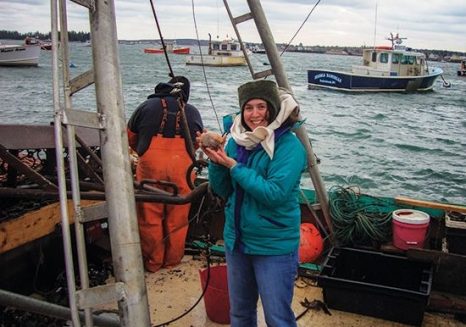
Maine Scallop fishermen stay close to home
Scallop divers might have been feeling optimistic, due to a steady increase in landings in recent years, when the fishery started for the winter season on Dec. 1. But the number of scallop draggers showing up in Cobscook Bay on their opening day, Dec. 5, seemed to indicate a certain pessimism. Trisha Cheney, the resource management coordinator for scallops for the Maine Department of Marine Resources told The Quoddy Tides that only 69 boats showed up for opening day. That’s about half the size of the fleet that has been in the bay at the start of the season during many years. Almost all of the boats were local Cobscook Bay boats. In the past, many draggers from ports to the west have traveled to Cobscook Bay to fish. This year, the fleet was apparently more spread out. Cheney told the paper that 76 draggers were fishing in the Jonesport area this year. Read the rest of the story here 14:03
‘Alarm bells ringing’ as Queensland Fisheries Minister responds to scallop stock collapse
 A stock assessment of scallops has revealed critically low numbers off the Queensland coast, just 6 per cent of their original biomass. Catches in the past year are at the lowest level since records began almost 40 years ago. Queensland’s Fisheries Minister Bill Byrne, only six days into the portfolio after the departure of former minister Leanne Donaldson, admits the situation is so dire, the Government had considered imposing a total ban. Instead, it had opted to permanently close a number of ‘replenishment areas’, covering 11 per cent of the scallop grounds, that were due to reopen in January. An annual spawning closure from May 1 to October 31 would also be introduced in an urgent bid to rebuild stocks. Keeping these closed and implementing winter closures were expected to impact on up to 40 per cent of the annual catch, based on recent fishing history. Read the story here 16:04
A stock assessment of scallops has revealed critically low numbers off the Queensland coast, just 6 per cent of their original biomass. Catches in the past year are at the lowest level since records began almost 40 years ago. Queensland’s Fisheries Minister Bill Byrne, only six days into the portfolio after the departure of former minister Leanne Donaldson, admits the situation is so dire, the Government had considered imposing a total ban. Instead, it had opted to permanently close a number of ‘replenishment areas’, covering 11 per cent of the scallop grounds, that were due to reopen in January. An annual spawning closure from May 1 to October 31 would also be introduced in an urgent bid to rebuild stocks. Keeping these closed and implementing winter closures were expected to impact on up to 40 per cent of the annual catch, based on recent fishing history. Read the story here 16:04
The Opposition get’s nasty! Scallop fishing restart criticised by TV’s Iolo Williams
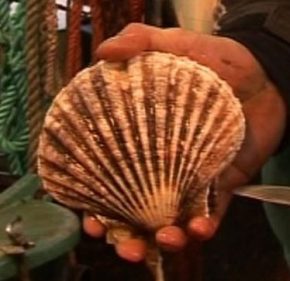 Commercial fishing ended in Cardigan Bay, Ceredigion, five years ago when it became a special area of conservation. The Welsh government has approved limited fishing in specific areas using a “flexible permit scheme”. But TV presenter Williams said it “opens the door for ploughing the sea bed on an industrial scale”. In a post on his facebook page, he wrote: “This does not support local, sustainable fisheries. “I’m dismayed but not surprised that this bunch of worthless parasites has, once again, supported the destruction of an internationally important wildlife site.” “I am appalled that the Welsh government, who are supposed to have sustainability at the heart of all their work, can contemplate opening up a protected area to such a destructive fishing method,” he added. The decision came after a two-year study found limited fishing in certain areas would have no adverse impact on the area. On Tuesday, the Whale and Dolphin Conservation (WDC) group revealed its “disbelief and disappointment” at the approval because of Cardigan Bay’s “habitat for bottlenose dolphins and porpoise”. OMG! Read the story here 16:56
Commercial fishing ended in Cardigan Bay, Ceredigion, five years ago when it became a special area of conservation. The Welsh government has approved limited fishing in specific areas using a “flexible permit scheme”. But TV presenter Williams said it “opens the door for ploughing the sea bed on an industrial scale”. In a post on his facebook page, he wrote: “This does not support local, sustainable fisheries. “I’m dismayed but not surprised that this bunch of worthless parasites has, once again, supported the destruction of an internationally important wildlife site.” “I am appalled that the Welsh government, who are supposed to have sustainability at the heart of all their work, can contemplate opening up a protected area to such a destructive fishing method,” he added. The decision came after a two-year study found limited fishing in certain areas would have no adverse impact on the area. On Tuesday, the Whale and Dolphin Conservation (WDC) group revealed its “disbelief and disappointment” at the approval because of Cardigan Bay’s “habitat for bottlenose dolphins and porpoise”. OMG! Read the story here 16:56
Once-bountiful scallop fishery collapses as oil leak persists in Newfoundland bay
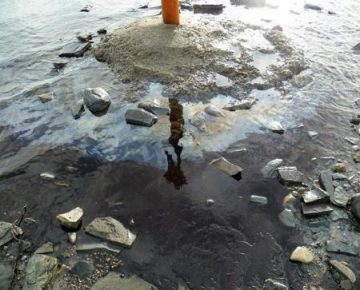 The oil has been seeping for about three years — sometimes in drops, sometimes leaving large slicks — fouling a scenic area in western Newfoundland once known for its scallop fishing. Concerned residents near Shoal Point in Port au Port Bay have tried everything from news releases to photos and video of the bubbling leak from an abandoned exploration well, trying to spur a permanent fix. “If there was a leak in St. John’s harbour, the coast guard would probably jump on it within hours,” said Bob Diamond of the Port au Port Bay Fishery Committee. What is certain is that the scallop fishery, a once crucial economic driver in the area, has collapsed over the last three years, he said in an interview. Read the story here 20:48
The oil has been seeping for about three years — sometimes in drops, sometimes leaving large slicks — fouling a scenic area in western Newfoundland once known for its scallop fishing. Concerned residents near Shoal Point in Port au Port Bay have tried everything from news releases to photos and video of the bubbling leak from an abandoned exploration well, trying to spur a permanent fix. “If there was a leak in St. John’s harbour, the coast guard would probably jump on it within hours,” said Bob Diamond of the Port au Port Bay Fishery Committee. What is certain is that the scallop fishery, a once crucial economic driver in the area, has collapsed over the last three years, he said in an interview. Read the story here 20:48
Maine – Industry confronts access issues as scallop season opens
 The Maine scallop fishery opened Tuesday morning, with predictions that the boat price will be high, the season short and the pressure to let more people into the fishery intense. Last week, Trisha Cheney, the Department of Marine Resources’ scallop resource coordinator, hosted an outreach meeting in Ellsworth to give industry members a heads-up about what to expect for the coming season and to hear their concerns about the fishery and the way it is managed by DMR. Read the article here 14:00
The Maine scallop fishery opened Tuesday morning, with predictions that the boat price will be high, the season short and the pressure to let more people into the fishery intense. Last week, Trisha Cheney, the Department of Marine Resources’ scallop resource coordinator, hosted an outreach meeting in Ellsworth to give industry members a heads-up about what to expect for the coming season and to hear their concerns about the fishery and the way it is managed by DMR. Read the article here 14:00






